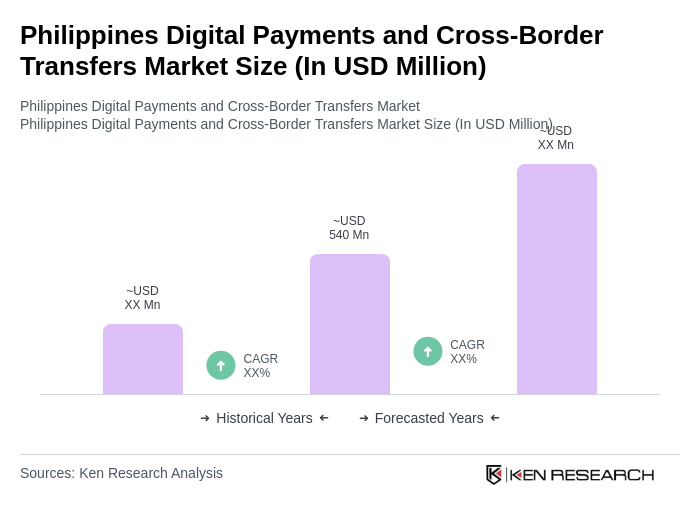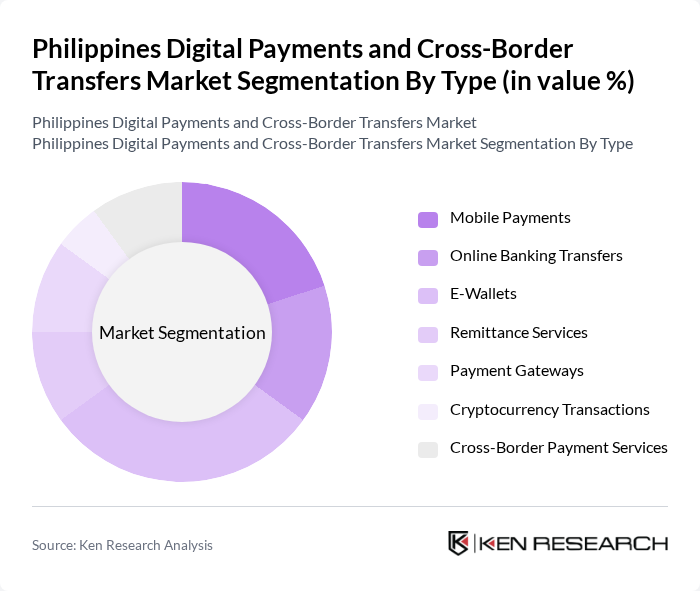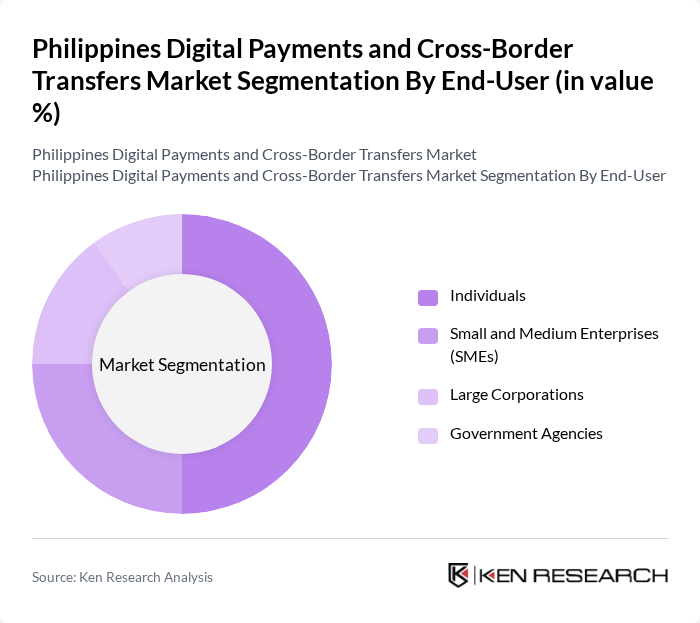Region:Asia
Author(s):Geetanshi
Product Code:KRAA3653
Pages:85
Published On:September 2025

By Type:

The digital payments market is segmented into various types, including Mobile Payments, Online Banking Transfers, E-Wallets, Remittance Services, Payment Gateways, Cryptocurrency Transactions, and Cross-Border Payment Services. Among these, E-Wallets have emerged as the leading sub-segment, driven by the convenience they offer for everyday transactions and the growing acceptance among consumers and merchants. The increasing number of partnerships between e-wallet providers and retail businesses has further solidified their position in the market.
By End-User:

The end-user segmentation includes Individuals, Small and Medium Enterprises (SMEs), Large Corporations, and Government Agencies. Individuals represent the largest segment, driven by the increasing adoption of digital wallets and mobile payment solutions for personal transactions. The convenience and accessibility of these services have made them popular among consumers, leading to a significant shift from traditional cash transactions to digital alternatives.
The Philippines Digital Payments and Cross-Border Transfers Market is characterized by a dynamic mix of regional and international players. Leading participants such as GCash, PayMaya, Coins.ph, Western Union, PayPal, GrabPay, UnionBank, BDO Unibank, RCBC, EastWest Bank, CIMB Bank, Maybank, Land Bank of the Philippines, Philippine National Bank, Security Bank, Viber Pay contribute to innovation, geographic expansion, and service delivery in this space.
The Philippines digital payments and cross-border transfers market is poised for significant transformation, driven by technological advancements and evolving consumer preferences. The integration of artificial intelligence in payment processing is expected to enhance transaction efficiency and security. Furthermore, the increasing demand for contactless payments, particularly in retail and transportation sectors, will likely accelerate the shift towards cashless transactions. As the government continues to support digitalization initiatives, the market is set to expand, fostering greater financial inclusion and innovation.
| Segment | Sub-Segments |
|---|---|
| By Type | Mobile Payments Online Banking Transfers E-Wallets Remittance Services Payment Gateways Cryptocurrency Transactions Cross-Border Payment Services |
| By End-User | Individuals Small and Medium Enterprises (SMEs) Large Corporations Government Agencies |
| By Application | E-commerce Retail Payments Bill Payments Cross-Border Transactions Remittances Others |
| By Payment Method | Credit/Debit Cards Bank Transfers Mobile Wallets Cash on Delivery Others |
| By Transaction Size | Micro Transactions Small Transactions Medium Transactions Large Transactions |
| By User Demographics | Age Groups Income Levels Geographic Distribution |
| By Regulatory Compliance | Licensed Providers Unlicensed Providers Compliance with BSP Regulations Others |
| Scope Item/Segment | Sample Size | Target Respondent Profiles |
|---|---|---|
| Digital Payment Users | 120 | Consumers aged 18-45, Tech-savvy Individuals |
| SME Owners | 60 | Small Business Owners, Financial Managers |
| Cross-Border Transfer Users | 50 | Individuals sending remittances, Expatriates |
| Payment Service Providers | 40 | Product Managers, Business Development Executives |
| Regulatory Bodies | 40 | Policy Makers, Financial Regulators |
The Philippines Digital Payments and Cross-Border Transfers Market is valued at approximately USD 540 million, reflecting significant growth driven by increased adoption of digital financial services, smartphone penetration, and the rise of e-commerce.